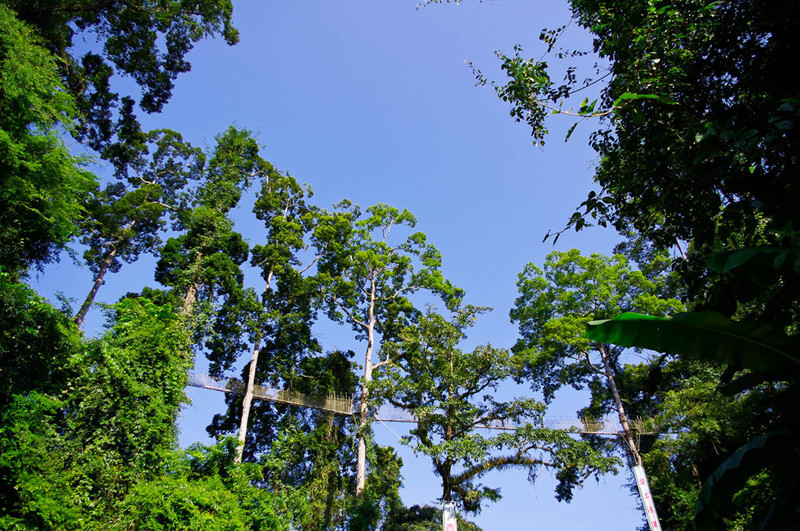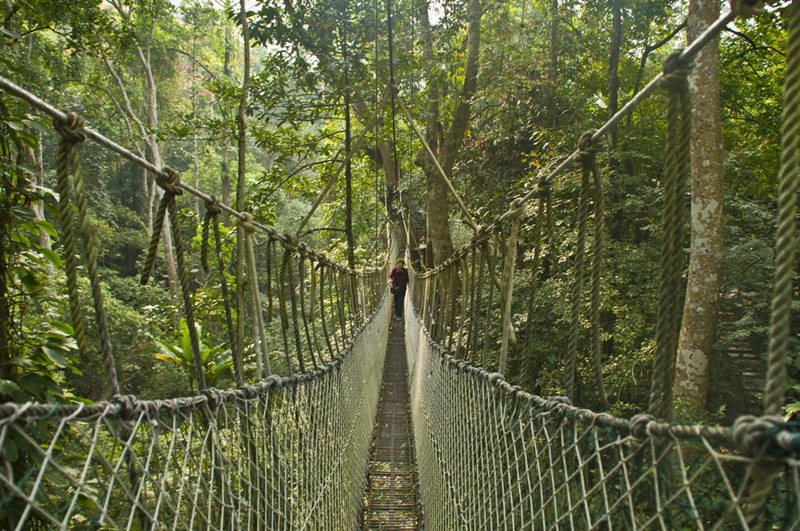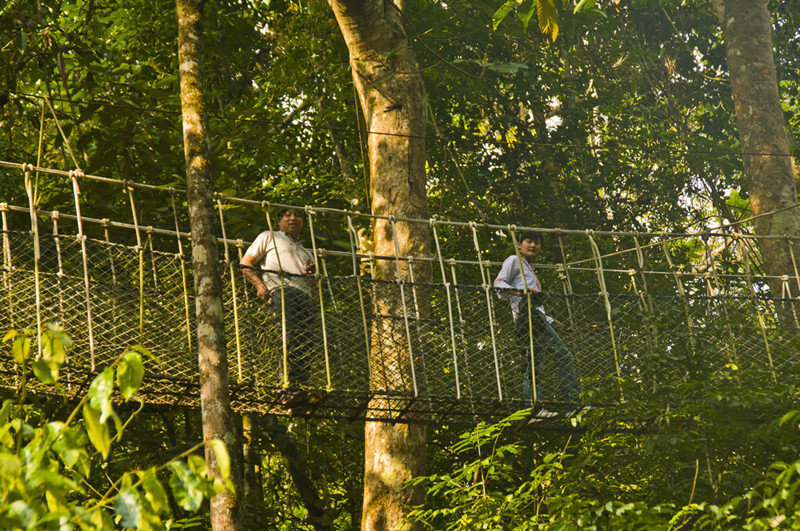
Air Corridor of Wangtianshu Scenic Area in Mengla County, XishuangBanna
📍 Location
-
Address: No. 9, Lunhuo Alley, Dukezong Ancient Town, Jiantang Town, Shangri-La City, Diqing Prefecture, Yunnan, China
-
Altitude: Approx. 3,300 meters
-
Setting: On top of Guishan (a small hill) in the heart of Dukezong Ancient Town, east of Moonlight Square
-
How to get there:
-
10-minute taxi ride from central Shangri-La
-
5–10 minute walk from anywhere in the ancient town; the path is paved with stone and moderately sloped
-
🏯 Highlights
| Attraction | Description |
|---|---|
| Guishan Great Buddha Temple (龟山大佛寺) | Built during the Kangxi period, features the triple-golden-roofed “Chaoyang Pavilion” enshrining Shakyamuni and the Thousand-Hand Guanyin. It’s one of the most revered temples in the region. |
| World’s Largest Prayer Wheel (世界最大转经筒) | Standing 21 meters tall and weighing 60 tons, it takes 7–15 people to rotate it. One full turn equals 1.24 million blessings. |
| Panoramic Viewpoint | From the third floor of Chaoyang Pavilion, enjoy stunning views of Dukezong Ancient Town, Tibetan rooftops, and distant Shika Snow Mountain—especially magical at sunrise or at night. |
| Moonlight Square & Ancient Well | At the foot of the hill lies a 1,000-year-old well with pure spring water, once the main water source for locals. Mornings are great for witnessing Tibetan locals collecting water. |
📸 Photography Tips
-
Best Times:
-
Morning: Soft lighting, fewer people, locals collecting water or spinning the prayer wheel
-
Evening: Golden sunlight illuminates the prayer wheel and temple rooftops, with rising chimney smoke from the town below
-
Night: Prayer wheel and temple lit up—perfect for long exposure shots
-
-
Recommended Angles:
-
From the base of the prayer wheel for dramatic upward shots with human interaction
-
From the third-floor balcony of Chaoyang Pavilion to capture the town and snow-capped mountain in the background
-
Low-angle shots beside the ancient well, capturing locals in daily rituals
-
✅ Useful Tips
| Topic | Suggestions |
|---|---|
| Admission | Free, open all day |
| Altitude Warning | Elevation is 3,300m – ascend slowly and avoid intense physical activity |
| Clothing Tips | Large temperature differences between day and night – bring a windbreaker; modest clothing required in the temple |
| Nearby Attractions | Combine with night tours of Dukezong Ancient Town, Songzanlin Monastery, and Napa Lake |
| Cultural Etiquette | Spin prayer wheels clockwise, remain quiet inside temples, never point at Buddha statues |
✨ One-Sentence Summary
“Spin the giant prayer wheel and gaze over Moonlight City—only then have you truly arrived in Shangri-La.”
Sky Walkway at Wangtianshu Rainforest Park (望天树空中走廊), Xishuangbanna
📍 Location
-
Official Name: Wangtianshu Tropical Rainforest Theme Park (National 4A-Level Attraction)
-
Coordinates: Located inside Bubang National Nature Reserve, Mengla County, Xishuangbanna Prefecture, Yunnan
-
Distances:
-
18 km from Mengla Town
-
190 km from Jinghong City
-
-
How to Get There:
-
From Jinghong: Daily bus at 8:30 AM from Jinghong Bus Station to Mengla (4 hrs); then taxi or shared ride to the park
-
By car: Jinghong → Xiaomo Highway → Mengla Town → Bubang Village; smooth asphalt roads throughout
-
🌳 Highlights
| Feature | Experience |
|---|---|
| Sky Walkway (空中走廊) | One of the world’s tallest canopy walkways, 36 meters above ground and 500 meters long, suspended between Wangtianshu trees 40–88 meters tall. Below: endless rainforest; above: infinite blue sky. |
| Rainforest Marvels | Observe the five major wonders of tropical rainforests: buttress roots, stranglers, epiphytes, cauliflory, and drip-tip leaves. |
| Land–Water–Sky Experience | Take a boat along the Nanla River (known as the “Oriental Amazon”), hike the Philip Trail, then ascend the sky walkway—completing a full water-land-air loop. |
| Wildlife & Flora | Home to over 30 animal species including wild elephants, gibbons, and peacocks; and rare trees like Wangtianshu, mountain mangrove, and ebony. |

📸 Photography Hotspots
-
Midpoint of the Walkway: Perfect for wide-angle or aerial-style shots over the rainforest canopy
-
Wangtianshu Viewing Platforms: Pause for dramatic “giant’s-eye” perspectives from tree-top platforms
-
Nanla River Dock: Reflections and lush greenery; best light is early morning or late afternoon
✅ Useful Tips
| Topic | Suggestions |
|---|---|
| Tickets | ¥198 (includes boat + walkway); online price ¥160; half price for students and seniors; free for kids under 1.2m |
| Opening Hours | 08:30–18:00; visit in the morning to avoid heat and crowds |
| What to Wear | Grippy hiking shoes, quick-dry clothing, mosquito repellent; no sandals or high heels on the walkway |
| Fear of Heights | Walkway is made of grated wood and rope, may sway slightly—those afraid of heights should reconsider |
| Suggested Duration | 2.5–3 hours total: Boat (15 min) → Hike (40 min) → Walkway (30 min) → Science Hall & Flower Trail (30 min) |
| Where to Stay | Overnight in Mengla Town (budget hotels available) or book rainforest cabins inside the park (reserve in advance) |
🌟 One-Sentence Summary
“At 36 meters high, you’re not just walking a bridge—you’re standing on the shoulders of giants, gazing over the lungs of the Earth.”
💡 Tip: For a 2-day deep jungle trip, combine with visits to the Xishuangbanna Tropical Botanical Garden or Wild Elephant Valley.


 7 Days GolfingTour
7 Days GolfingTour
 8 Days Group Tour
8 Days Group Tour
 8 Days Yunnan Tour
8 Days Yunnan Tour
 7 Days Shangri La Hiking
7 Days Shangri La Hiking
 11 Days Yunnan Tour
11 Days Yunnan Tour
 6 Days Yuanyang Terraces
6 Days Yuanyang Terraces
 11 Days Yunnan Tour
11 Days Yunnan Tour
 8 Days South Yunnan
8 Days South Yunnan
 7 Days Tea Tour
7 Days Tea Tour
 8 Days Muslim Tour
8 Days Muslim Tour
 12 Days Self-Driving
12 Days Self-Driving
 4 Days Haba Climbing
4 Days Haba Climbing
 Tiger Leaping Gorge
Tiger Leaping Gorge
 Stone Forest
Stone Forest
 Yunnan-Tibet
Yunnan-Tibet
 Hani Rice Terraces
Hani Rice Terraces
 Kunming
Kunming
 Lijiang
Lijiang
 Shangri-la
Shangri-la
 Dali
Dali
 XishuangBanna
XishuangBanna
 Honghe
Honghe
 Kunming
Kunming
 Lijiang
Lijiang
 Shangri-la
Shangri-la
 Yuanyang Rice Terraces
Yuanyang Rice Terraces
 Nujiang
Nujiang
 XishuangBanna
XishuangBanna
 Spring City Golf
Spring City Golf
 Snow Mountain Golf
Snow Mountain Golf
 Stone Mountain Golf
Stone Mountain Golf



















